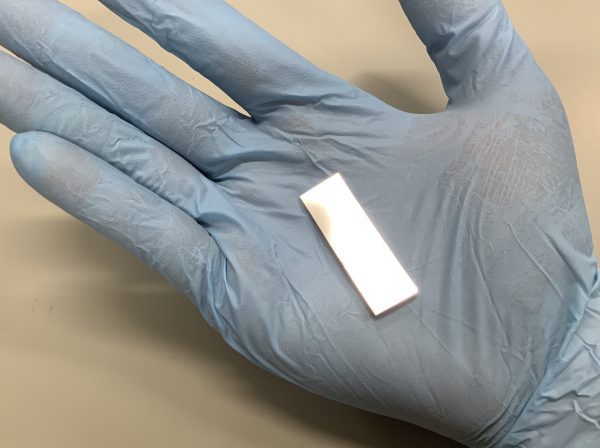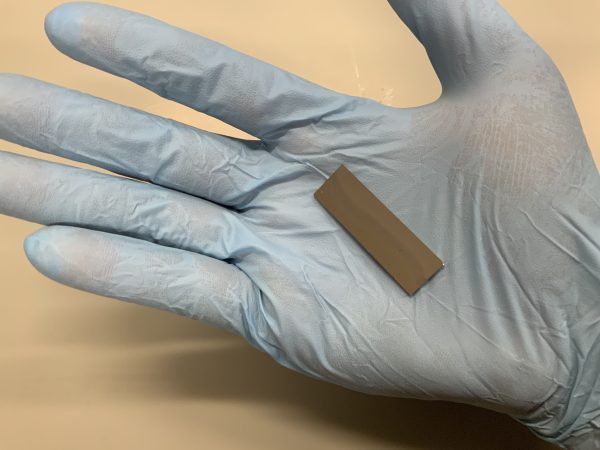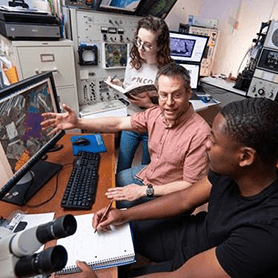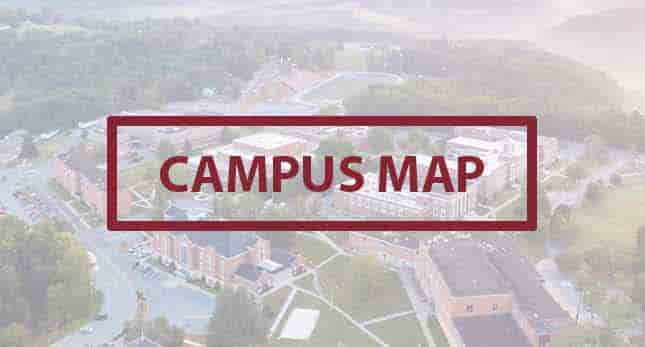CONCORD UNIVERSITY REACHES ANOTHER MILESTONE IN DEVELOPMENT OF ITS RARE EARTH ELEMENT ANALYSIS CENTER
CONTACT: Nicole Smith, Public Relations Manager
Concord University Office of Advancement
PO Box 1000, Athens, WV 24712
(304) 384-6312
nlsmith@concord.edu
www.concord.edu
FOR IMMEDIATE RELEASE: March 18, 2024
CONCORD UNIVERSITY REACHES ANOTHER MILESTONE IN DEVELOPMENT OF ITS RARE EARTH ELEMENT ANALYSIS CENTER
ATHENS, WV – Concord University has taken delivery on a high-performance X-ray-diffracting crystal manufactured by Rigaku Innovative Technologies of Auburn Hills, Michigan. The crystal was installed into Concord’s ARL electron microprobe by Advanced Microbeam Inc. of Vienna, Ohio. Only two such crystals exist in the world, the one now installed at Concord and the other at Advanced Microbeam.
This is the first of several federally funded major upgrades to Concord’s electron microscopy and microanalysis facilities, which represents a key step in development of the Concord Materials and Rare Earth Element Analysis Center. The project is managed by Dr. Stephen Kuehn and Dr. Joseph Allen, both professors in Geology and Earth Science at Concord.
This summer, Dr. Kuehn is scheduled to give a national conference presentation summarizing the unique new capabilities. This presentation, titled “Improved EPMA Analysis of Rare Earth and Trace Elements Using a New Precision Germanium WDS Crystal,” will be given at the Microscopy and Microanalysis 2024 conference in Cleveland, Ohio in July.
Since 2010, Concord University has operated the only electron microprobe instrument in West Virginia. This is a specialized type of electron microscope designed to collect images and evaluate the chemical make-up of materials at sizes as small as 1/1000th of a millimeter. When the instrument targets a material with a narrowly-focused beam of electricity, that target sample gives off X-rays which can reveal key details about the sample. This is where the new X-ray diffracting crystal comes into play. It separates out the X-rays in a way similar to how a prism separates visible light into the colors of a rainbow, and it does this better than other materials previously used. This is especially advantageous for rare earth elements (REEs) and for other chemical elements which may be present only in small trace amounts such as those found in coal and coal refuse.
The Concord Materials and Rare Earth Element Analysis Center project was launched in 2022 with funds from a major grant by the U.S. Department of Education, which was procured through the Congressionally Directed Spending program with lead support from Senator Joe Manchin. The original grant has since been augmented by an Innovation Grant awarded to Dr. Kuehn last fall by the Science, Technology and Research (STaR) Division of the WV Higher Education Policy Commission (HEPC). In January, the West Virginia Office of the Governor also allocated funds to partially match the federal grant. Funding awarded for the project to date includes the $642,000 federal grant, $40,000 Innovation Grant, and $150,000 state match which now totals $832,000.
“West Virginia is on the cutting edge of research and innovation, and this exciting milestone is further proof of that,” said Senator Manchin. “I’m proud to have helped secure a Congressionally Directed Spending award to support the Concord Materials and Rare Earth Element Analysis Center and its newly acquired X-ray-diffracting crystal. I look forward to seeing the groundbreaking advancements this project will undoubtedly continue to produce and, as a member of the Senate Appropriations Committee, I will continue advocating for resources to bolster scientific research and support our West Virginia universities.”
Several additional improvements to the microprobe lab are also underway, and other kinds of complementary equipment are being planned to expand the types of materials which can be examined and the scientific and industry applications which can be supported. The next milestones include new instrument control software and new electronics with estimated delivery in June 2024.
Concord students and faculty, visiting researchers, and industry will be all able to take advantage of the Center in support of workforce training, scientific research, and economic development. As a teaching institution, Concord’s analytical instruments are frequently used for classes in geology, chemistry, and physics as well as for collaborative student and faculty research projects. This already makes it possible to provide Concord students hands-on experiences which they might not get elsewhere, and the capabilities to do so just keep getting better.
Further, Concord is seeking to partner with entrepreneurs to demonstrate the commercial application of the newly developed capabilities of the equipment, particularly in the extraction of REEs.
For additional information about the Concord’s electron microprobe laboratory and the developing Materials and Rare Earth Element Analysis Center, please contact Dr. Stephen Kuehn at sckuehn@concord.edu or 304-384-6322.


-CU-
Persons with disabilities should contact Nancy Ellison, 1-304-384-6086 or 1-800-344-6679 extension 6086, if special assistance is required for access to an event scheduled by the University on campus.
Concord University may take pictures at these events for publicity purposes.



